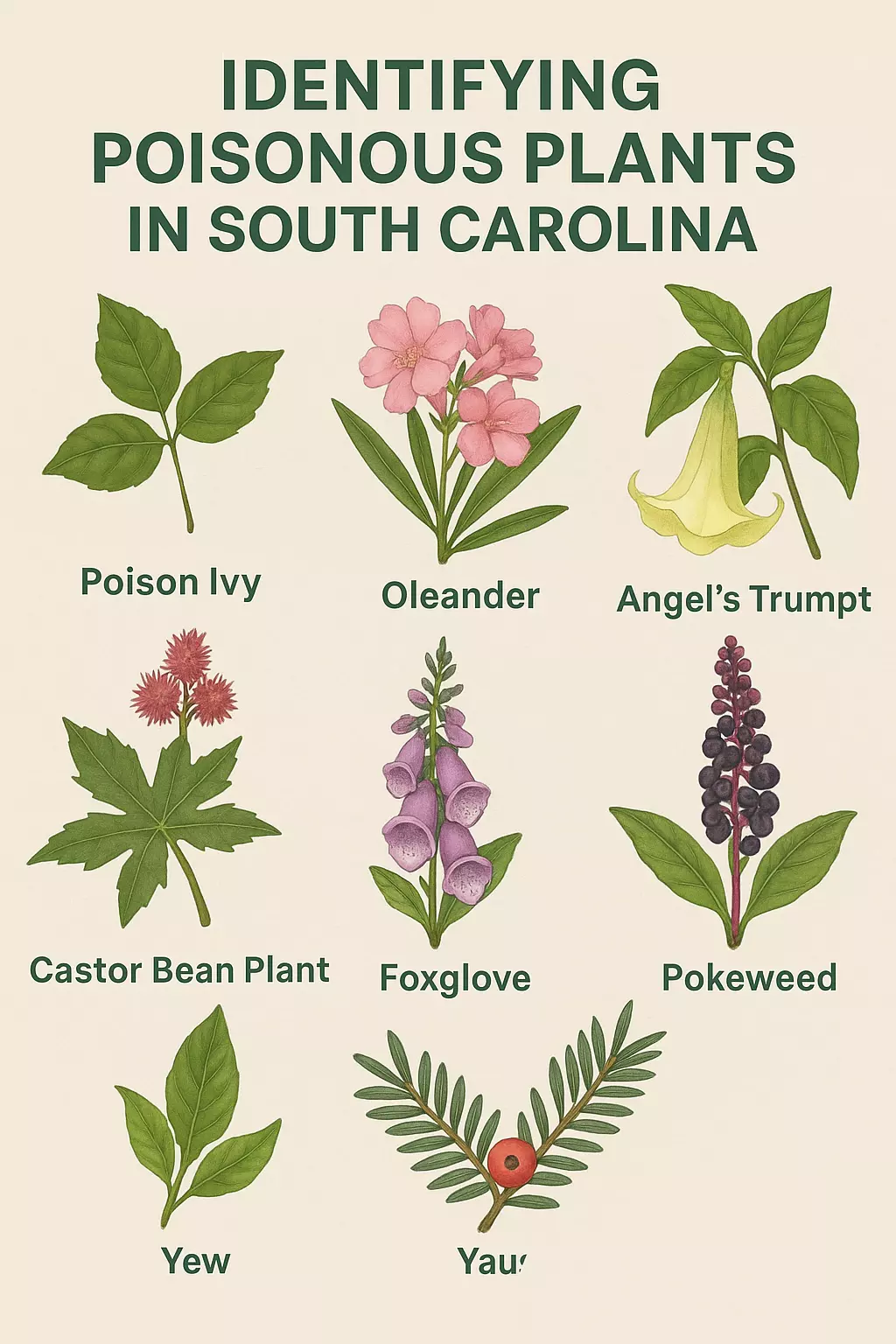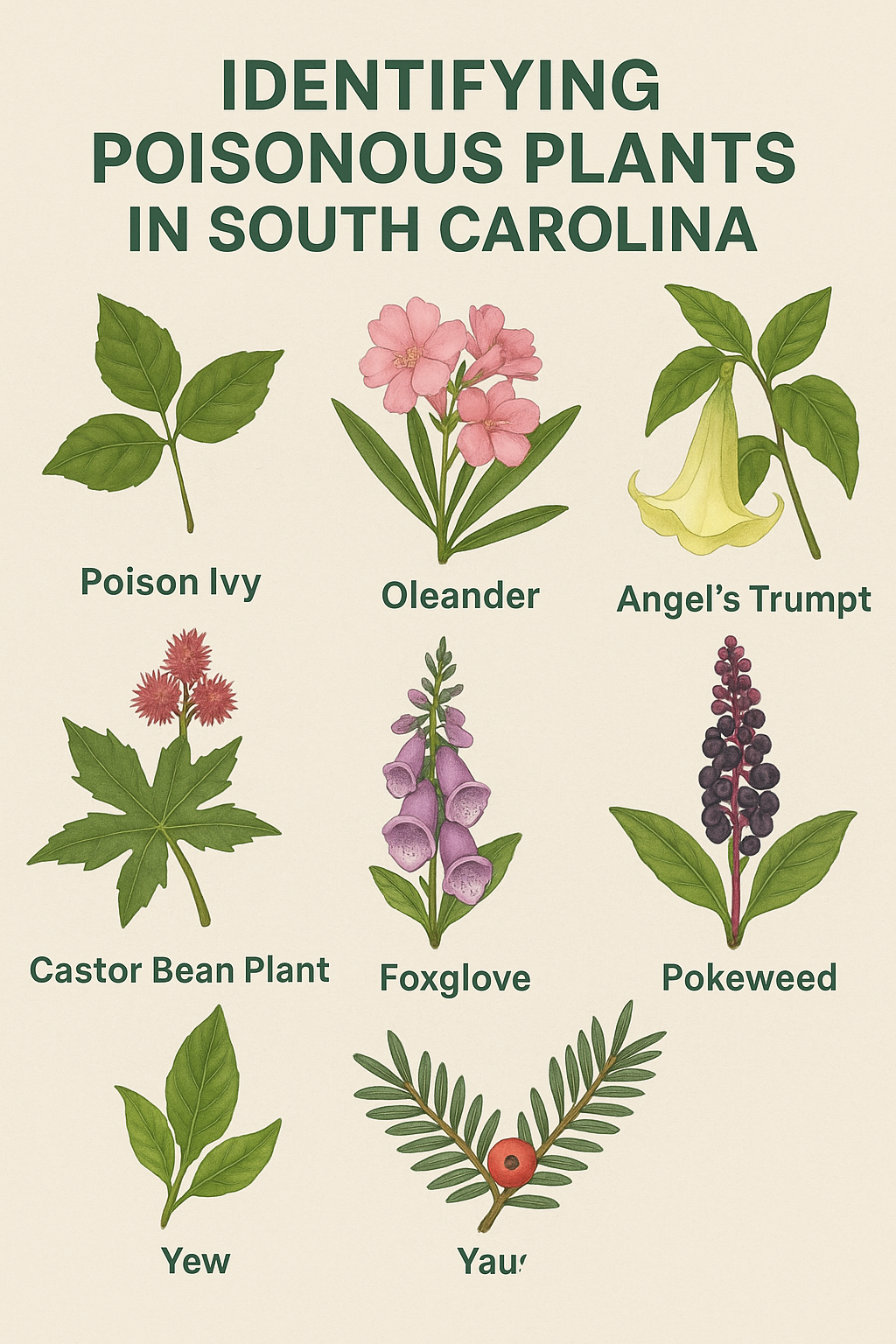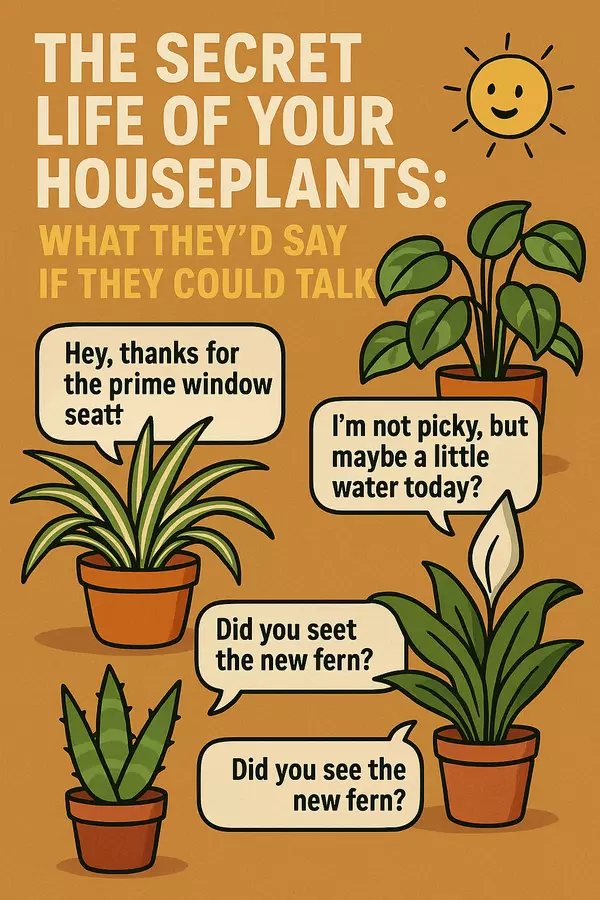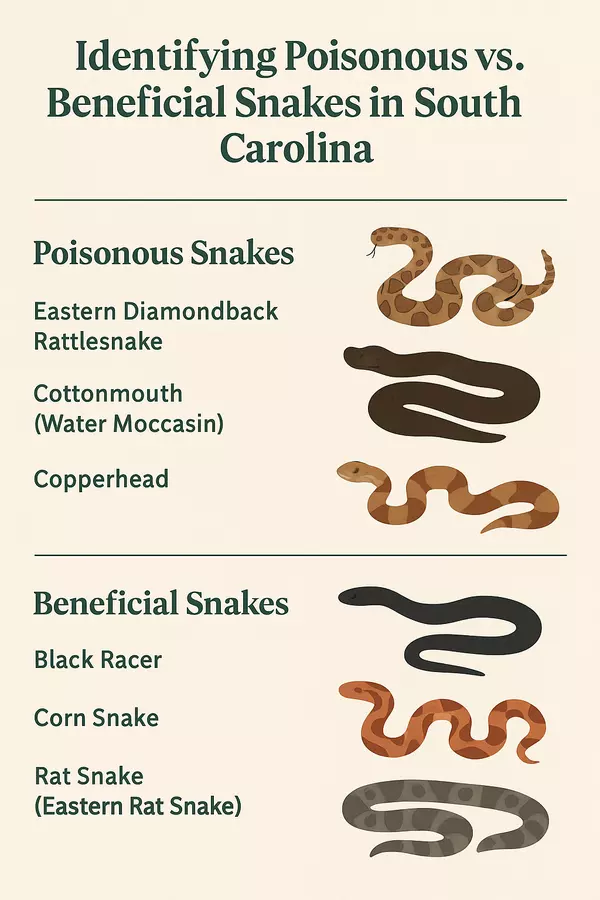Identifying Poisonous Plants in South Carolina: A Guide for Homeowners and Garden Enthusiasts


Identifying Poisonous Plants in South Carolina: A Guide for Homeowners and Garden Enthusiasts
As a homeowner in South Carolina, it’s important to be aware of the potentially harmful plants that can lurk in your garden, yard, or nearby natural areas. While the natural beauty of the state’s flora is stunning, some plants can be toxic to humans and pets. Whether you’re cultivating your garden or enjoying outdoor activities, knowing how to identify these plants is crucial for safety.
In this blog, we’ll explore some of the most common poisonous plants found in South Carolina and how you can identify them.
1. Poison Ivy (Toxicodendron radicans)
Appearance: Poison Ivy is one of the most well-known poisonous plants in the U.S., and South Carolina is no exception. It typically grows as a vine or shrub with clusters of three pointed leaves. The leaves can be shiny or dull, and their color changes throughout the seasons—from green in the spring and summer to red or orange in the fall.
How to Identify: The leaves are usually three in a group, and they can have smooth or slightly jagged edges. The classic phrase “leaves of three, let it be” is a good rule of thumb. Poison ivy produces small white or yellowish berries that animals may eat, which helps spread the plant.
Danger: Contact with any part of the plant can cause severe skin rashes, itching, and irritation due to the oil (urushiol) it contains.
2. Oleander (Nerium oleander)
Appearance: Oleander is a hardy, evergreen shrub often found in ornamental gardens. It has narrow, lance-shaped leaves and produces large, showy flowers that can be white, pink, or red.
How to Identify: The leaves are long, thick, and leathery, with a distinct aroma when crushed. Oleander blooms in clusters, often seen from late spring to fall.
Danger: All parts of the Oleander plant are highly toxic if ingested, with symptoms including nausea, vomiting, and even heart irregularities. Even inhaling smoke from burning Oleander can be dangerous.
3. Angel’s Trumpet (Brugmansia spp.)
Appearance: Known for its large, trumpet-shaped flowers, Angel’s Trumpet can be found in gardens or as ornamental plants in warmer climates. Its flowers hang downward and come in shades of white, yellow, pink, or orange.
How to Identify: This shrub has long, narrow leaves and its flowers can reach up to 12 inches in length. The plant emits a strong fragrance, especially in the evening.
Danger: All parts of this plant are poisonous, with the highest concentration of toxins found in the flowers and seeds. Ingestion can cause dilated pupils, confusion, and even hallucinations. It’s often used in traditional medicine in some cultures, but its toxicity is significant.
4. Castor Bean Plant (Ricinus communis)
Appearance: The Castor Bean plant has large, glossy, palmate leaves that are often reddish or green, with jagged edges. The plant grows as a bushy shrub, and its seeds are housed in spiky pods.
How to Identify: The plant can grow quite large, up to 10 feet in height. It produces clusters of red or pink flowers, and the seeds are glossy, oval-shaped, and speckled.
Danger: The seeds contain ricin, one of the most toxic substances in nature. Ingesting even a small amount of the seeds can be fatal. While the plant itself can be grown as an ornamental, the seeds should be kept far out of reach of children and pets.
5. Foxglove (Digitalis purpurea)
Appearance: Foxglove is a beautiful biennial plant with tall spikes of tubular flowers that range in color from purple to white. It grows well in the shade and produces blooms that attract hummingbirds and bees.
How to Identify: The plant’s leaves are large, soft, and fuzzy, and its flowers are arranged in clusters along tall spikes. The flowers resemble long bells and are usually purple, pink, or white.
Danger: Foxglove contains toxins called cardiac glycosides, which can cause heart problems, nausea, and even death if consumed in large amounts. It’s essential to handle it with care and to keep children away from the flowers.
6. Yew (Taxus spp.)
Appearance: Yew is an evergreen shrub or small tree commonly used in landscaping. It has dark green, needle-like leaves and produces red, berry-like arils around a single seed.
How to Identify: The leaves are dark green and flat, and the plant has a distinctive, berry-like structure. The berries are red and fleshy, but the seed inside is toxic.
Danger: The seeds inside the red berries are extremely toxic if ingested. Symptoms of poisoning include vomiting, difficulty breathing, and seizures. While the berries themselves might seem harmless, the seeds pose a significant risk.
7. Pokeweed (Phytolacca americana)
Appearance: Pokeweed is a perennial plant with large, dark green leaves and clusters of purple or black berries. It grows in wooded areas, fields, and along roadsides.
How to Identify: The plant has tall stalks with greenish-white flowers that eventually give way to dark purple or black berries. The leaves are broad and pointed, with a purple stem.
Danger: The berries, leaves, and roots of pokeweed are toxic if ingested. Symptoms of poisoning include nausea, vomiting, and diarrhea. The berries may look attractive, but they can be deadly, especially for young children.
How to Protect Your Home and Family
-
Educate your family and pets: Make sure everyone knows to stay away from unknown plants and to recognize the toxic ones. Teaching children about dangerous plants is a key step in preventing accidental poisonings.
-
Use native plants: South Carolina is home to many non-toxic, beautiful native plants. Opting for native species can reduce the risk of toxic exposure.
-
Be cautious when gardening: Always wear gloves while handling plants, especially if you’re unsure of their toxicity. If you’re uncertain, look up the plant or ask a local expert.
-
Landscaping with safety in mind: When designing your garden, choose plants that are both beautiful and safe. If you do have toxic plants, ensure they are planted out of reach of children and pets.
-
Know the symptoms of poisoning: If you suspect poisoning, seek medical help immediately. Symptoms may include nausea, vomiting, dizziness, and confusion, depending on the plant ingested.
Conclusion
Knowing how to identify poisonous plants is essential for homeowners, gardeners, and anyone who enjoys the outdoors in South Carolina. By being proactive and learning which plants to avoid, you can ensure that your home remains a safe haven for both people and pets. Always be vigilant when handling plants, and if in doubt, consult an expert for guidance on safe gardening practices.
Stay safe, and happy gardening!
Recent Posts










